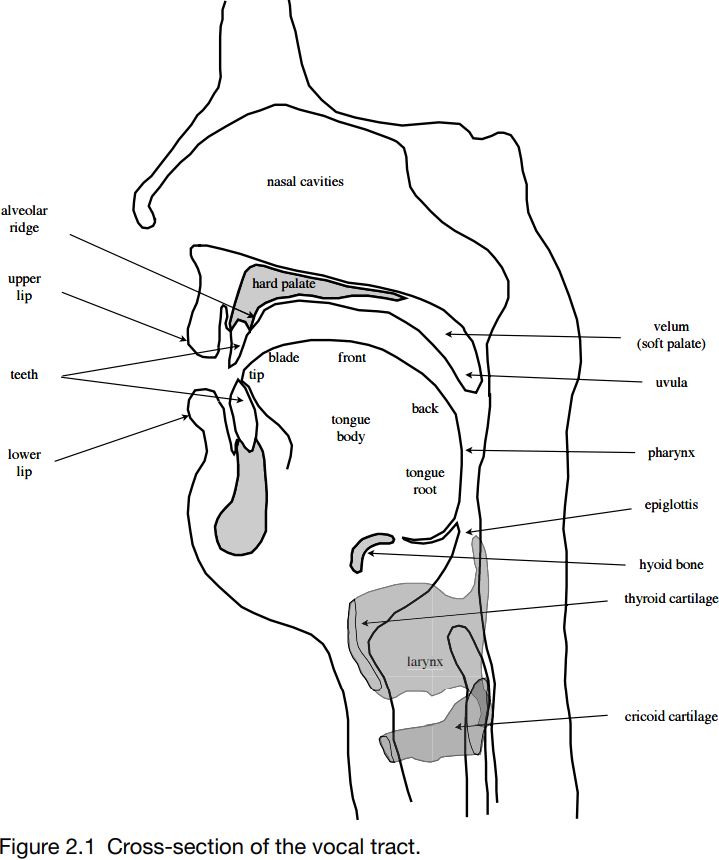
The larynx and voicing
 المؤلف:
Richard Ogden
المؤلف:
Richard Ogden
 المصدر:
An Introduction to English Phonetics
المصدر:
An Introduction to English Phonetics
 الجزء والصفحة:
9-2
الجزء والصفحة:
9-2
 6-6-2022
6-6-2022
 1223
1223
The larynx and voicing
The larynx (Figure 2.1) is a structure built of cartilage. Its main purpose is as a kind of valve to stop things going down into the lungs. We will look at the larynx in more detail manner.
You should be able to locate your larynx quite easily. You probably know it as your ‘Adam’s apple’ or voice box. It is often visible as a notch at the front of the neck.
The larynx contains the vocal folds (also known as the vocal cords, but this suggests that they are like strings on a stringed instrument, which they are not). When we breathe, they are kept wide apart, which allows air to pass freely across the glottis, the space between the folds; but during speaking, the vocal folds play an important role because they can be made to vibrate. This vibration is called voicing. Sounds which are accompanied by voicing are called voiced sounds, while those which are not are called voiceless sounds.
You can sense voicing by a simple experiment. Say the sound [m] but put your hands over your ears. You will hear quite a loud buzzing which is conducted through your bones to your ears. Now repeat this saying a [s] sound, and you will notice that the buzzing stops. Instead, you will hear a (much quieter) hissing sound, which is due to the turbulent airflow near the back of the teeth. If you now say a [z] sound, you will notice that everything is the same as for [s], except that there is the buzzing sound because [z] is voiced. Voicing is caused by the very rapid vibration of the vocal folds. Voicing is one of the most important features of speech sounds, and we will look at it in more detail manner.

 الاكثر قراءة في Phonetics
الاكثر قراءة في Phonetics
 اخر الاخبار
اخر الاخبار
اخبار العتبة العباسية المقدسة


